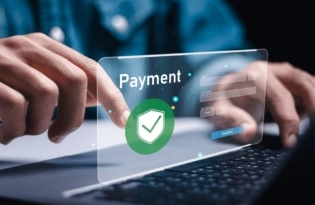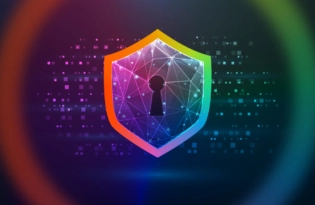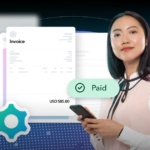Business and payment fraud detection: what it is and how to prevent it
What is payment fraud detection and what do you need to know to understand, detect, and prevent fraudulent activities. Discover the best practices, tools, and strategies to safeguard your business against payment fraud and protect your financial assets.

What is payment fraud detection?
Payment fraud detection involves actively monitoring and identifying fraudulent activities within financial transactions. It entails analyzing transactional data, patterns, and behaviors to detect anomalies, irregularities, or suspicious actions. The goal is to identify and mitigate potential risks before they result in financial losses, and not wait until it’s too late to take action.
Payment fraud can have severe consequences for businesses including financial losses, damage to reputation, and legal implications. This is why it is critical to have steps in place to detect fraud early in the process.
The different types of payment fraud
Not all fraud schemes look the same. Here are some of the most common types of payment fraud in business today:
- Account takeover: In an account takeover, fraudsters gain unauthorized access to legitimate accounts by stealing login credentials or using social engineering techniques.
- Phishing scams: Phishing scams can involve fake emails, text messages, or phone calls that trick people into giving away sensitive information, such as login credentials or financial details. Fraudsters often pose as reputable organizations, enticing victims to click on malicious links or provide confidential information.
- Credit card fraud: Credit card fraud is when fraudsters gain unauthorized access to credit card information and use it to make fraudulent purchases or cash withdrawals. This can involve physical theft of the card, skimming card details, or online hacking of card information.
- Identity theft: Identity theft involves the fraudulent use of someone’s personal information, including their name, Social Security number, and/or financial account details, without their consent. Fraudsters use stolen identities to open new accounts, make unauthorized transactions, or commit other forms of financial fraud.
- Mobile payment fraud: With the rise of mobile payment apps, fraudsters have targeted these platforms for fraudulent activities. This can include using stolen payment credentials, exploiting vulnerabilities in the app’s security, or conducting unauthorized transactions.
Preventing payment fraud
Preventing payment fraud is a critical aspect of protecting businesses from financial losses and reputational damage. Here are our top recommendations for how to protect yourself from fraud:
- Use secure payment systems: Ensure that your payment systems and infrastructure are secure. This includes using encryption technology to protect sensitive data during transmission and storing customer information in a secure manner.
- Two-factor authentication: Implement two-factor authentication (2FA) for online transactions and account access. 2FA adds an extra layer of security by requiring users to provide additional verification, such as a unique code sent to their mobile device, in addition to their username and password.
- Employee training and awareness: Educate your employees about payment fraud risks and prevention measures. Provide training on how to identify and report suspicious activities.
- Fraud detection systems: Deploy robust fraud detection systems that can monitor transactions in real-time and detect potentially fraudulent activities. Set up alerts and thresholds to flag potentially fraudulent activities for further investigation.
- Regular account reconciliation: Regularly reconcile your financial accounts to identify any unauthorized or fraudulent transactions promptly. Monitor transaction histories, bank statements, and payment processor reports to ensure all transactions are legitimate. Report any discrepancies or suspicious activities to the appropriate authorities.
- Strong password policies: Enforce strong password policies for your customers and employees. Encourage the use of complex passwords that include a combination of letters, numbers, and special characters. Regularly prompt users to update their passwords and consider implementing password expiration policies.
- Vendor due diligence: Conduct due diligence when selecting and working with third-party vendors, payment processors, and service providers. Ensure they have robust security measures in place to protect your payment data. Review their security policies, certifications, and track record in handling payment transactions securely.
Frequently asked questions
If you suspect payment fraud, it’s important to take immediate action. Contact your financial institution or payment processor to report the suspected fraudulent activity. Save any evidence, such as transaction records or suspicious emails. Additionally, notify the appropriate authorities, such as local law enforcement or the Federal Trade Commission (FTC), and follow their guidance on further steps to take.
When working with third-party vendors and service providers, conduct due diligence to ensure they have robust security measures in place. Review their security policies, certifications, and track record in handling payment transactions securely. Establish clear contractual agreements that outline security expectations and responsibilities to safeguard your payment data.
Ongoing monitoring allows you to stay vigilant and identify potential vulnerabilities and emerging fraud trends. By regularly reviewing payment processes and systems, staying informed about the latest fraud techniques, and conducting risk assessments, you can adapt your prevention strategies and implement appropriate controls to mitigate the risks of payment fraud.
Related resources
Latest articles
-
A guide to starting a business in Estonia as a non-citizen
If you’ve thought about opening a new business somewhere with plenty of government support, expanding your business into the EU, or making it easier to work as a contractor or digital nomad anywhere in the European Economic Area (EEA), you should think about starting a business in Estonia…
-
How to simplify payment operations with Payoneer’s automation feature
Save time, reduce costs, and eliminate errors with Payoneer’s new payment automation feature.
-
How to prevent online payment fraud as an SMB
Prevent online payment fraud by overcoming challenges like phishing, fake accounts, and account takeovers (ATO) with enhanced security features from Payoneer.
-
Amazon Fees & Policy Updates 2024
Amazon regularly makes planned updates to fees and policies that may impact Payoneer customers that sell on Amazon. To keep Payoneer customers informed regarding upcoming and past updates, we’re providing a list of known changes to Amazon fees and Policy updates.
-
How Payoneer’s target exchange rate feature will help you save more on bank withdrawals
Boost savings with Payoneer’s target exchange rate feature.
-
Navigating phishing attacks: A guide to keeping your Payoneer account secure
Keeping your funds safe is our number one priority at Payoneer. While phishing attempts can happen, arming yourself with knowledge is key to keeping your data and money safe














